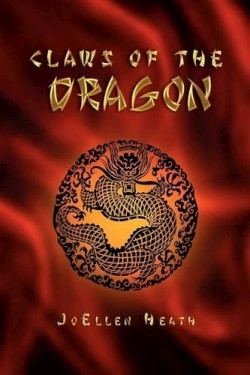Claws of the Dragon
The mysteries of the Orient have captivated Westerners since Marco Polo returned from his travels to write about the wonders he experienced in China in the thirteenth century. The supposed inscrutability of Asians seems to provide endless scenarios for writers who imagine intrigues involving stolen fortunes, ancient curses, and inexplicable deaths.
JoEllen Heath’s mystery, Claws of the Dragon, begins in China in 1760, but the story quickly moves to Hawaii, California, and Oregon of the 1970s. A young woman named Crystal seeks to unravel the secrets of her Caucasian and Asian heritage as she attempts to secure the legacy she is supposed to inherit from her recently deceased father. She travels between the mainland and Hawaii in search of answers to an increasingly complex situation, while being helped, courted, trailed, and perhaps betrayed by a seductive young man and a wealthy older man.
Crystal learns that her family harbors secrets that relatives are reluctant to reveal. When she returns to the family home in Oregon, the housekeeper, Pearl, tells Crystal of their true relationship and explains a cryptic tale of four stones. Pearl tells Crystal, “I will try to remember the story as it was told to me by my elders…Many say it was only a fable handed down through generations, growing more exaggerated with each recounting. However, within every fable, there is always some truth.”
The author has lived on the Big Island of Hawaii for forty years. Claws of the Dragon is her second book in a trilogy that explores Asian and Hawaiian cultures.
Modern Hawaiian culture and the interaction among islanders serve as a backdrop to the story. Resident characters rely on rumor passed on to them by other locals who, though not close friends, are considered trustworthy because of mutual connections. “Andrew…drove to Magic Sands beach to enjoy a late-afternoon swim, and he ran into Kavika…Kavika told him about Kaipo and that something was going down tonight out at the airport beach,” Heath writes.
Other characters make a show of being trustworthy, but their actions reveal more devious motives. When one of the men attentive to Crystal searches Pearl’s belongings, he conceals evidence from the police, after first making note of what he’s found. The author explains, “He placed the letter and envelope, along with the handkerchief, into the metal wastebasket…took his lighter and watched as it all turned to ashes.”
The plot reveals frequent surprising twists, but numerous adjectives, use of passive voice and misplaced words slow its pace. Expository dialogue serves to explain scene, history, and action rather than reflecting characters’ individuality. Most confusingly, point of view hops from one character to another without transitional breaks.
Readers may hope for a revelatory crumb to whet their appetite for the last book in this trilogy, but Claws of the Dragon ends without resolving a single intrigue the author has constructed to hook her audience. Even so, people who enjoy a complex mystery will find this book of interest.
Disclosure: This article is not an endorsement, but a review. The publisher of this book provided free copies of the book and paid a small fee to have their book reviewed by a professional reviewer. Foreword Reviews and Clarion Reviews make no guarantee that the publisher will receive a positive review. Foreword Magazine, Inc. is disclosing this in accordance with the Federal Trade Commission’s 16 CFR, Part 255.

